Yojana Summary: August 2024
1. Cellular Jail- The Saga Of Resistance
- 1. Cellular Jail- The Saga Of Resistance
- 2. Rani Abbakka: The Unyielding Guardian of Sovereignty and Justice
- 3. Glorious Guards of Freedom from Gujarat: A Tale Often Untold
- 4. Jambudweep Proclamation
- 5. Untold Stories Of The Freedom Struggle From Northeast India
- 6. K Kelappan: A Dedicated Freedom Fighter And A Stalwart Social Reformer
- 7. Contribution Of Indian Languages To The Freedom Movement
- 8. Youth Consciousness For Indian Freedom In Bengal
- 9. India’s Strategic Engagement In The South China Sea
Location and Construction:
- Cellular Jail, also known as “Kala Pani” (Black Water), is located in Port Blair, the capital of the Andaman and Nicobar Islands, India.
- Construction of the jail began in 1896 and was completed in 1906 under British colonial rule.
- Its remote location in the Bay of Bengal was strategically chosen to prevent escapes.
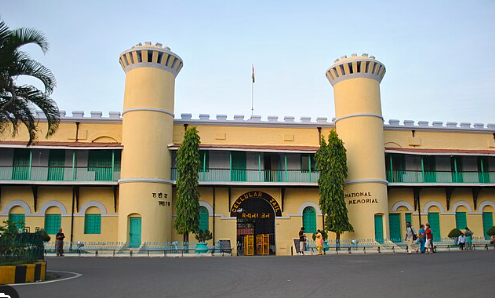

Architectural Design:
- The jail’s design features seven wings radiating from a central watchtower, resembling a spider’s web. This layout was intended to isolate prisoners completely.
- Each cell was designed for solitary confinement, measuring approximately 4.5 metres by 2.7 metres.
- The cells had thick walls and small windows, creating a suffocating environment with minimal light and air.
- The central watchtower allowed guards to monitor all prisoner movements, emphasising the oppressive nature of the jail.
Historical Context:
- The establishment of Cellular Jail was a direct response to the 1857 Sepoy Mutiny, a major uprising against British rule, which led the British to adopt harsher measures for dealing with dissent.
- The jail was used primarily to exile and punish political prisoners and revolutionaries who opposed British authority. It became notorious for its inhuman conditions.
Operational Period and Closure:
- Cellular Jail was officially inaugurated in 1906 and operated until India gained independence in 1947. During this period, it symbolised the brutality of colonial rule.
- After India’s independence, the jail was closed. In 1969, it was declared a national memorial to preserve its history and educate visitors about the atrocities committed during the colonial era.
Architectural Features:
- Designed by British architect J. A. H. W. Macpherson, the jail employed the ‘Pennsylvania System or Separate System’ theory, which required complete isolation of each inmate to prevent communication and rebellion.
- The layout of the jail and its solitary cells were intended to break the spirit of prisoners through isolation and silence.
Notable Freedom Fighters:
- Vinayak Damodar Savarkar: A prominent revolutionary, poet, and politician, Savarkar was sentenced to two life terms (50 years) in 1911 for his anti-colonial activities. He played a crucial role in mobilising support for India’s independence and was eventually released in 1924.
- Batukeshwar Dutt: Known as B.K. Dutt, he participated in the Central Legislative Assembly bombing in 1929 alongside Bhagat Singh. Sentenced to life imprisonment, he was exiled to Cellular Jail and passed away in 1965.
- Fazl-E-Haq Khairabadi: Arrested for inciting violence after the 1857 rebellion, Khairabadi was sentenced to life imprisonment in Cellular Jail, and his property was confiscated by the British.
- Barindra Kumar Ghose: Involved in the Alipore Bomb Case, Ghose was initially sentenced to death but later received a life sentence. He was deported to Cellular Jail in 1909.
- Sushil Dasgupta: A member of the Yugantar Dal, Dasgupta was involved in the Putiya Mail Robbery case of 1929. After escaping from Medinipur prison, he was captured and sent to Cellular Jail.
Post-Independence Era:
- On December 29, 1943, Subhas Chandra Bose’s Azad Hind government took control of the Andaman Islands. Bose visited Port Blair and raised the tricolour flag of the Indian National Army, marking a significant moment in the region’s history.
Conclusion:
- Cellular Jail remains a poignant symbol of the suffering endured by countless freedom fighters and a stark reminder of the colonial era’s repressive measures.
- It continues to attract visitors who seek to understand the harsh realities faced by those who fought for India’s independence.
2. Rani Abbakka: The Unyielding Guardian of Sovereignty and Justice
Introduction
- Rani Abbakka, also known as Rani Abbakka Chowta, was a prominent queen of the Tuluva Kingdom in the late 16th century.
- She is celebrated for her relentless resistance against the Portuguese colonial powers and her commitment to sovereignty and justice.
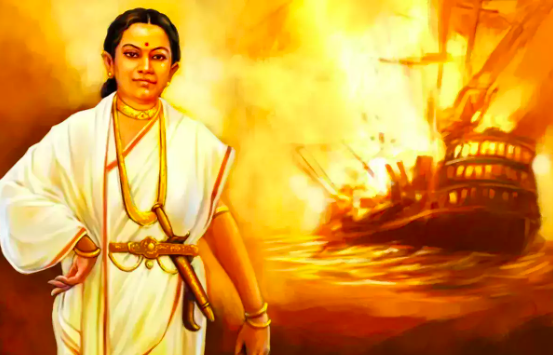
Early Life and Background
- Born in the early 16th century, Rani Abbakka was the daughter of the Tuluva King, Virappa Nayaka.
- Her early life was marked by her education in statecraft and military strategy, preparing her for a future role as a leader.
Reign and Leadership
- Became queen of the Tuluva Kingdom, located in the present-day Karnataka region of India.
- Her reign was characterised by strong administrative skills and a focus on maintaining the kingdom’s independence from external threats.
- Rani Abbakka was known for her effective military strategies, which included guerilla warfare and alliances with neighbouring states.
Resistance Against Portuguese Colonisation
- The Portuguese began their aggressive expansion into the Indian subcontinent during the 16th century.
- Rani Abbakka’s kingdom was a strategic target due to its coastal location, which was crucial for Portuguese trade routes.
- She led several successful campaigns against the Portuguese, utilising both conventional and unconventional warfare tactics.
- Her resistance was marked by the destruction of Portuguese ships and fortifications along the coast.
Legacy and Contributions
- Rani Abbakka’s unwavering stance against colonial domination made her a symbol of resistance and national pride.
- Her leadership and bravery inspired subsequent generations in the struggle for independence and sovereignty.
- Her legacy is commemorated in various cultural and historical references in the region, emphasising her role as a defender of justice.
Recognition and Cultural Impact
- Rani Abbakka is remembered through numerous monuments, memorials, and cultural references that highlight her contributions.
- Her story is often recounted in local folklore, literature, and academic discussions as a testament to her courage and leadership.
Conclusion
- Rani Abbakka’s life and legacy remain a powerful reminder of the struggle for sovereignty and justice.
- Her resistance against Portuguese colonisation exemplifies the indomitable spirit of regional rulers in the face of imperial aggression.
- Her contributions to the protection of her kingdom and her role in the broader context of resistance movements continue to be celebrated and studied.
3. Glorious Guards of Freedom from Gujarat: A Tale Often Untold
Introduction
- Gujarat has been a significant contributor to India’s independence struggle, with several remarkable figures emerging from the region.
- This article explores the contributions of Vitthalbhai Patel, Govind Guru, Jhaverchand Kalidas Meghani, Sardar Vallabhbhai Patel, and Hansa Bhai Mehta, who played crucial roles in shaping Gujarat’s resistance against colonial rule.
Vitthalbhai Patel
- Background and Early Life:
- Born in 1873, Vitthalbhai Patel was a prominent leader in Gujarat’s early nationalist movement.
- Born on September 28, 1873, in Nadiad, Gujarat, he was the elder brother of Sardar Vallabhbhai Patel, a leading figure in the freedom struggle.
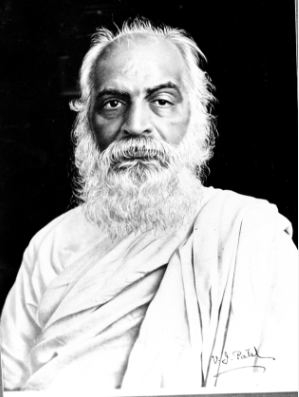
- Political and Social Contributions:
- Vitthalbhai played a significant role in the Indian National Congress, working alongside his brother to advance the cause of independence.
- He was actively involved in the non-cooperation movement and the civil disobedience movement, both led by Mahatma Gandhi.
- Patel was known for his strong organisational skills and his ability to mobilise support for the independence movement across Gujarat.
- He was also instrumental in negotiating with British authorities and advocating for Indian self-rule.
- After India gained independence, Vitthalbhai Patel served as the Vice President of the Indian National Congress and continued to support various social and political causes.
- He played a crucial role in the integration of princely states into the Indian Union.
- Vitthalbhai Patel passed away on December 22, 1933, but his contributions to the Indian freedom struggle and his dedication to the cause are remembered with respect and admiration.
- Legacy: Vitthalbhai Patel’s efforts in organising and leading peasant movements laid the groundwork for further resistance against British rule in Gujarat.
Govind Guru
- Background and Early Life:
- Govind Guru was a tribal leader from Gujarat, born in the early 20th century.
- Born on August 16, 1857, in a tribal village in Gujarat, he emerged as a key figure in mobilising the Bhil community against British colonial rule.
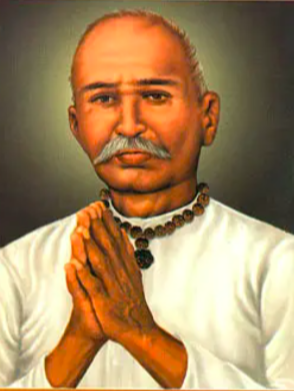
- Political and Social Contributions:
- Guru was deeply influenced by the socio-economic conditions of the tribal people and sought to uplift their status through reform and resistance.
- He led the Bhil Rebellion, also known as the “Bhil Uprising,” which aimed to resist British exploitation and assert the rights of the tribal people.
- Govind Guru was known for his commitment to social justice, working to improve the living conditions of the Bhil community and advocating for their rights.
- He was also a strong proponent of indigenous culture and traditions, striving to preserve and promote tribal heritage.
- His leadership and efforts in organising resistance against the British made him a significant figure in the regional independence movement.
- Despite facing repression from the British authorities, Govind Guru’s legacy endures as a symbol of tribal resistance and social reform.
- Legacy: Govind Guru’s resistance efforts were crucial in bringing the tribal struggles into the national consciousness and advocating for their rights.
Jhaverchand Kalidas Meghani
- Background and Early Life:
- Born in 1907, Jhaverchand Kalidas Meghani was a notable writer, journalist, and activist from Gujarat.
- Born on August 28, 1896, in a small village in Gujarat, Meghani emerged as a significant figure in the Indian independence movement and Gujarati literature.

- Political and Social Contributions:
- He was actively involved in the Indian National Congress and supported various nationalist causes, including the non-cooperation movement and civil disobedience led by Mahatma Gandhi.
- Meghani’s literary work, which includes poetry and essays, was deeply influenced by his nationalist fervour and his commitment to social justice.
- He used his writings to inspire and mobilise people against British colonial rule and to advocate for social reform.
- His notable works include “Kavi Kalapi” and “Sardar Patel”, which reflect his dedication to the Indian freedom struggle and his admiration for leaders like Sardar Vallabhbhai Patel.
- Meghani also played a role in the cultural renaissance of Gujarat, contributing to the development of modern Gujarati literature.
- He was a proponent of rural upliftment and sought to improve the socio-economic conditions of Gujarat’s villages.
- Legacy: Meghani’s literary contributions played a significant role in the freedom movement by galvanising public sentiment and promoting nationalist ideas.
Sardar Vallabhbhai Patel
- Background and Early Life:
- Born in 1875, Sardar Vallabhbhai Patel, known as the “Iron Man of India,” was a central figure in India’s independence movement.
- He was born on October 31, 1875, in Nadiad, Gujarat, was a key leader in the Indian independence movement and a founding father of modern India.
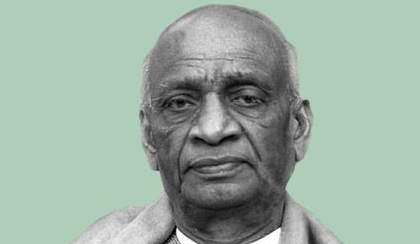
- Political and Social Contributions:
- He was a prominent member of the Indian National Congress and played a crucial role in mobilizing support for the freedom struggle.
- Patel was a strong advocate of non-violent resistance and worked closely with Mahatma Gandhi during the non-cooperation movement and civil disobedience campaigns.
- He was instrumental in leading the Bardoli Satyagraha in 1928, which successfully protested against increased land revenue taxes imposed by the British.
- Patel is best known for his efforts in the integration of princely states into the Indian Union after independence. His strategic diplomacy and negotiations were pivotal in unifying India.
- He served as the first Deputy Prime Minister and Home Minister of independent India, overseeing the reorganisation of states and the consolidation of the nation.
- Patel was also known for his emphasis on rural development and his efforts to improve the socio-economic conditions of farmers and the rural population.
- His legacy includes his role as a stalwart of Indian unity and his contributions to the country’s administrative and political frameworks.
- Sardar Vallabhbhai Patel passed away on December 15, 1950, and is remembered as a visionary leader and a key architect of modern India.
- Legacy: Patel’s strategic acumen and dedication to Indian unity and integration earned him a place among the foremost leaders of the Indian independence movement.
Hansa Bhai Mehta
- Background and Early Life:
- Hansa Bhai Mehta was a prominent social worker and freedom fighter form Gujrat.
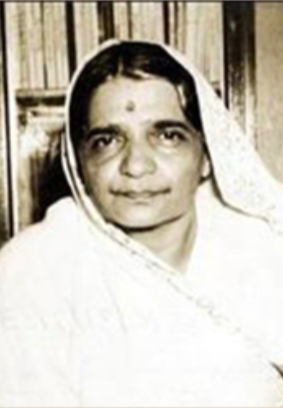
- Political and Social Contributions:
- She was an ardent supporter of Mahatma Gandhi and actively participated in the Salt March, a significant protest against British salt laws.
- Mehta played a key role in the All India Women’s Conference (AIWC), where she worked to uplift women’s status and promote their involvement in the independence movement.
- Her advocacy extended to improving women’s education, addressing social issues like child marriage and untouchability, and supporting legislation for women’s rights.
- She was instrumental in organising women’s associations and mobilising female support for the national movement, helping to elevate the role of women in the struggle for independence.
- After India gained independence, Mehta continued her advocacy for social justice and women’s empowerment.
- Her journey from Surat to the international stage saw her becoming a member of the Indian delegation to the United Nations.
- At the UN, Mehta contributed to global discussions on women’s rights and social issues, furthering her impact beyond India.
- Her work at the UN reflected her commitment to global peace and women’s issues, marking a significant extension of her efforts from the national to the international arena.
- Legacy: Hansa Bhai Mehta’s contributions to social reform and women’s empowerment continue to inspire contemporary movements for gender equality and social justice.
Conclusion
- The contributions of Vitthalbhai Patel, Govind Guru, Jhaverchand Kalidas Meghani, Sardar Vallabhbhai Patel, and Hansa Bhai Mehta are integral to the rich tapestry of Gujarat’s role in India’s freedom struggle.
- Their diverse efforts—from political activism and social reform to literary contributions—demonstrate the multifaceted nature of the resistance against colonial rule.
- Recognizing their sacrifices and achievements is essential to understanding the broader narrative of India’s path to independence and the significant role played by Gujarat.
4. Jambudweep Proclamation
Introduction to the Jambudweep Proclamation
- The Jambudweep Proclamation was declared in 1801 by the Maruthu brothers during the South Indian Rebellion against British colonial rule.
- This proclamation called for resistance against British oppression and criticised their exploitative policies.
- “Jambudweep” is a term with deep cultural significance in Indian tradition, often referring to the Indian subcontinent or a mythical landmass in Hindu, Buddhist, and Jain cosmology.
Background and Rise of the Maruthu Brothers
- The Maruthu brothers, Periya Maruthu (elder) and Chinna Maruthu (younger), were born to Mokka Palanisamy Thevar and Ponatha.
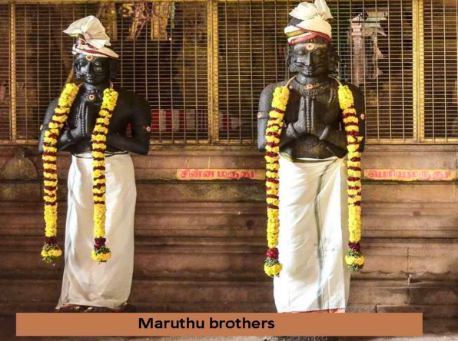
- They served the second king of Sivagangai, Muthuvadaganatha Thevar, and were trained in warfare and artillery.
- Their lives changed dramatically when the British killed the king and queen of Sivagangai during a nighttime attack.
- Fleeing with the queen, Vedanachiyar, to the kingdom of Virupakshi, they returned to Sivagangai after seven years.
- Periya Maruthu became the commander of the army, and Chinna Maruthu was appointed as the chief minister.
The Proclamation of 1801
- In 1801, the Maruthu brothers led a rebellion against British colonial rule, supported by other Southern Indian kings opposed to British dominance.
- They issued the Jambudweep Proclamation, which condemned British deceit and brutal treatment of Indians, and called for national resistance.
- The proclamation also criticised the lack of unity among Indian castes, which facilitated British dominance.
- The proclamation was displayed publicly on prominent locations such as the SriRangam Temple and the Rock Fort in Tamil Nadu.
British Response and Execution of the Maruthu Brothers
- The British, enraged by the Maruthu brothers’ defiance, launched a military campaign to suppress the rebellion.
- On October 24, 1801, the Maruthu brothers and approximately 500 supporters were captured and executed.
- The British executions were conducted without proper legal procedures, described as “anomalous and irregular” by historian Rajayyan.
- The British aimed to eliminate any future threats by executing male members of the Maruthu family, sparing only one son, Doraisamy, who was exiled to Malaysia.
Legacy of the South Indian Rebellion
- The South Indian Rebellion of 1801, led by the Maruthu brothers, represents one of the earliest organised efforts to resist British colonial rule.
- The rebellion highlighted the potential for collective resistance and the need for unity among Indians against colonial oppression.
- Although ultimately unsuccessful, the courage and sacrifice of the Maruthu brothers laid the groundwork for future independence movements.
- Their rebellion serves as a precursor to later, more widespread efforts for India’s independence, marking a significant chapter in the history of resistance against British rule.
5. Untold Stories Of The Freedom Struggle From Northeast India
Introduction
- India’s struggle for independence was marked by countless acts of bravery and resistance from various regions across the country.
- Many lesser-known freedom fighters played pivotal roles in the fight against British colonial rule, contributing to India’s rich tapestry of resistance and sacrifice.
- This article highlights some of these courageous figures and their remarkable contributions to the Indian freedom movement.
Notable Figures in Regional Resistance
- Bhogeswari Phukanani (1885-1942)
- Hailing from Assam, Bhogeswari Phukanani was a fearless freedom fighter who participated actively in the Quit India Movement.
- Despite being a mother of eight, she played a crucial role in liberating the Congress office in Berhampur, Assam.
- She was shot by British police and succumbed to her injuries after 20 days, sacrificing her life for India’s freedom.
- U. Tirot Singh
- A leader of the Khasi tribe, Tirot Singh led a guerrilla war against the British who were attempting to build a road through the Khasi Hills.
- Despite being outmatched in weaponry, he fought bravely for four years before being captured and imprisoned in Dhaka, where he died.
- Shoorvir Pasaltha Khuangchera
- Recognized as a legendary figure in Mizoram, Pasaltha Khuangchera was the first Mizo leader to resist the British invasion in 1890.
- He fought valiantly against British forces in the Lushai Hills and died in battle, his bravery continuing to inspire despite limited national recognition.
- Rani Gaidinliu
- A prominent Naga leader, Rani Gaidinliu initiated a movement against British rule at the age of 16.
- Captured and sentenced to life imprisonment, she was later released after India’s independence and continued to work for the upliftment of her people, earning the Padma Bhushan for her contributions.
- Kanaklata Baruah (1924-1942)
- At just 17 years old, Kanaklata Baruah from Assam was shot dead by British police while attempting to hoist the national flag at a police station during the Quit India Movement.
- Moje Riba
- A freedom fighter from Arunachal Pradesh, Moje Riba was the first to hoist the Indian tricolour in Dipa village on August 15, 1947.
- He was arrested for his involvement in the Quit India Movement and for distributing pamphlets advocating for independence.
- Gomdhar Konwar
- An active participant in the freedom movement from Assam, Gomdhar Konwar was involved in the Quit India Movement of 1942.
- Known for his bravery and leadership, he faced severe repression and was posthumously honoured by the Indian government through various institutions named in his memory.
- Moongri
- Recognized as one of the first female martyrs in the Indian freedom movement, Moongri participated in protests against British oppression.
- She lost her life during a protest, and her contributions have been honoured through memorials and educational institutions.
- Bom Singpho
- From Arunachal Pradesh, Bom Singpho played a crucial role in organising local tribes against British rule.
- His efforts to unite various tribes laid the foundation for future movements, with the Indian government recognizing his contributions through various initiatives.
- Thangal General
- Also known as Thangal Sardar, he was a prominent leader in the Manipuri resistance during the First Anglo-Manipur War (1891).
- Leading guerrilla warfare tactics against colonial forces, his legacy is celebrated in Manipur with commemorations and institutions in his honour.
- Ka Phan Nonglait
- A significant figure in Meghalaya’s freedom movement, Ka Phan Nonglait led protests against British policies.
- Her fearless contributions to the independence struggle are commemorated by the state government through memorials and educational programs.
- Ropuiliani
- An active freedom fighter from Mizoram, Ropuiliani was involved in organising local communities against British rule.
- The government has honoured him through commemorations and educational initiatives, highlighting his role in the anti-colonial struggle.
- Sachindra Lal Singh
- An influential leader from Tripura, Sachindra Lal Singh played a vital role in mobilising masses against British rule.
- His contributions to the freedom struggle are recognized by memorials and educational institutions dedicated to preserving his legacy.
Conclusion
- The contributions of these regional heroes underscore the diverse and widespread nature of India’s freedom struggle.
- Their courage and sacrifice were instrumental in challenging British colonial rule and paved the way for India’s eventual independence.
- By acknowledging their stories, we honour their memory and recognize the rich history of resistance that shaped the nation.
6. K Kelappan: A Dedicated Freedom Fighter And A Stalwart Social Reformer
Introduction
- K Kelappan, also known as the ‘Kerala Gandhi,’ was a multifaceted personality whose contributions spanned various fields, including freedom fighting, social reform, education, and journalism.
- His tireless efforts in championing social equality, fighting colonial rule, and promoting education have left a lasting imprint on Kerala’s history and India’s independence movement.
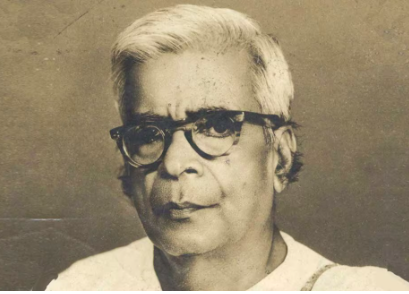
Early Life and Education
- Birth and Background: Born on August 24, 1889, in Muchukunnu, Kozhikode district, Kerala, K Kelappan was an influential figure in the Indian independence movement and social reform.
- Educational Journey: He completed his education at the University of Madras, where he developed a strong inclination towards social work and higher values. He initially pursued a teaching career at St. Berchman’s High School in Changanassery.
Entry into Politics and Social Reform
- Early Activism: In 1920, Kelappan became principal of a society-run school but later discontinued law studies in Bombay to join Mahatma Gandhi’s non-cooperation movement.
- Caste Reforms: Alongside fellow Gandhian leader K Kumar, Kelappan removed the caste suffix ‘Nair’ from his name, symbolising his commitment to eradicating caste discrimination and promoting equality. He established numerous Harijan hostels and schools across Kerala to uplift the marginalised.
Media and Journalism
- Founding Mathrubhumi Daily: As a founding director and editor of Mathrubhumi Daily, established in 1923, Kelappan utilised the platform to address social issues and advocate for reform.
- Editorial Contributions: His role as an editor extended to Samadarshi in the 1950s, where he continued to champion social causes and amplify voices of the underprivileged through his writings.
Participation in Key Movements
- Salt Satyagraha: Kelappan played a crucial role in organising the Salt Marches in Kerala, particularly in Payyannur, aligning with Gandhi’s broader Salt Satyagraha campaign. His leadership galvanised public participation and solidarity in the fight against British rule.
- Vaikom and Guruvayoor Satyagrahas: He was a central figure in both the Vaikom Satyagraha (1925) and the Guruvayoor Satyagraha (1932), pivotal movements advocating for untouchables’ rights to enter temples and public spaces.
Imprisonment and Political Contributions
- Quit India Movement: Kelappan was imprisoned from August 9, 1942, during the Quit India Movement until June 28, 1945. His incarceration reflected his steadfast commitment to India’s independence struggle.
- Post-Independence Efforts: After independence, Kelappan presided over the Aikya Kerala Conference in 1947, contributing to the formation of a unified Malayalam-speaking state. He also served as president of the Malabar District Board.
Visionary Initiatives and Legacy
- Rural Development: In 1963, Kelappan founded a Rural Institute to promote rural education and development. This institution, later renamed Kelappaji College of Agricultural Engineering and Technology (KCAET), stands as Kerala’s only Agricultural Engineering College.
- Dedication to Service: Throughout his life, Kelappan remained committed to Gandhian ideals, focusing on selfless service rather than personal gain. He played an active role in the Swadeshi Movement and the promotion of Khadi and village industries.
Conclusion
- K Kelappan’s life was a testament to his unwavering dedication to social reform and the freedom struggle.
- His contributions as a freedom fighter, social reformer, educator, and journalist significantly shaped Kerala’s socio-political landscape.
- Honoured posthumously with a commemorative stamp in 1990, Kelappan’s legacy continues to inspire and influence new generations in their quest for justice, equality, and national pride.
7. Contribution Of Indian Languages To The Freedom Movement
Introduction
- During India’s struggle for independence from British colonial rule, literature emerged as a powerful medium of expression and communication.
- It not only reflected the nation’s anguish but also inspired a collective yearning for freedom.
- Nationalist literature played a crucial role in awakening national consciousness and mobilising support for the independence movement.
Historical Context
- Colonial Expansion: The British East India Company’s expansion through victories at Plassey (1757) and Buxar (1764) established a vast colonial empire in India.
- First War of Independence: The revolt of 1857, also known as the First War of Independence, marked a significant turning point, igniting a series of uprisings that fueled the desire for liberation.
- Role of Newspapers: Leaders like Bal Gangadhar Tilak used newspapers such as Kesari to critique British policies, despite facing imprisonment for their bold expressions.
- Printing Press: The introduction of the printing press in Goa in 1576 and the emergence of the first Indian newspaper, The Bengal Gazette (1780), facilitated the spread of nationalist ideas.
Influence of Language and Press
- National Press: Raja Ram Mohan Roy, a key figure in the national press, published Sambad Kaumudi in Bengali, fostering a sense of unity among Indians.
- Vernacular Literature: Nationalist literature used local languages to connect with the masses, transcending linguistic barriers. The British’s attempt to suppress this through the Vernacular Press Act of 1878 was eventually repealed in 1881, leading to a resurgence of nationalist sentiment.
Prominent Literary Figures
- Bankim Chandra Chattopadhyay: His novel Anandamath (1882), set during the Sannyasi rebellion, introduced the iconic song “Vande Mataram,” which became a rallying cry for the independence movement. His work Devi Chaudharani (1884) also inspired women’s participation in the struggle.
- Bal Gangadhar Tilak: Through his newspapers Mahratta and Kesari, Tilak articulated the aspirations of the Indian populace, becoming a prominent voice of the freedom movement.
- Rabindranath Tagore: A Nobel laureate, Tagore’s novels such as Gora (1909) and Ghare Baire (1916) explored themes of nationalism and inner conflict. He also composed India’s national anthem, “Jana Gana Mana.”
- Bharatendu Harishchandra: Recognized as the father of modern Hindi literature, Harishchandra’s plays and poems laid the foundation for Hindi nationalism and highlighted social issues while advocating for freedom.
Revolutionary Literature
- Anushilan Samiti: Revolutionary organisations like Anushilan published newspapers that galvanised public sentiment against colonial rule.
- Savarkar’s Writings: Vinayak Damodar Savarkar’s The Indian War of Independence (1909) redefined the 1857 revolt as the first war for independence, bringing national attention to the struggle.
- Diaspora Contributions: The Indian diaspora also contributed to the freedom movement, with publications like Hindustan Ghadar and Circular-i-Azadi voicing anti-colonial sentiments from abroad.
Social Influence On Literature
- Social Reforms: Literature addressed social evils and called for reform alongside political freedom. Works such as Mulk Raj Anand’s Untouchable (1935) and Sarat Chandra Chattopadhyay’s Pathar Dabi (1926) highlighted the need for social justice and equality.
- Gandhi’s Writings: M.K. Gandhi’s Hind Swaraj (1938) emphasised self-rule and moral integrity in the struggle for independence.
Conclusion
- Literature played a pivotal role in India’s freedom struggle by inspiring individuals, fostering a collective identity, and sustaining the spirit of freedom.
- The evocative narratives and poignant themes of nationalist literature not only motivated the masses but also laid the groundwork for a unified national movement.
- The legacy of these literary contributions continues to resonate in contemporary India, underscoring the power of words in shaping a nation’s destiny and inspiring future generations.
8. Youth Consciousness For Indian Freedom In Bengal
Introduction
- The early 20th century was a period of intense revolutionary fervour in India, marked by a surge of youth-driven nationalism and a quest for independence from British colonial rule.
- The period between 1905 and the 1930s saw the rise of a new generation of leaders and activists who played a crucial role in shaping the Indian freedom struggle.
- Their efforts were instrumental in fostering a sense of national identity and resistance against colonial oppression.
The Catalyst of National Awakening
- Young Bengal Movement: The Young Bengal movement was pivotal in stirring national consciousness and a desire for independence.
- Ideas of Liberty: These revolutionaries promoted concepts of liberty, self-rule, and cultural pride.
- Nationwide Impact: Their influence transcended Bengal, igniting a widespread national awakening.
Partition of Bengal (1905)
- British Decision: Lord Curzon’s partition of Bengal was executed along religious lines, aimed at undermining Bengali unity.
- Public Discontent: The decision was met with significant unrest, particularly among the youth.
- Cultural Suppression: The partition was perceived as an attempt to suppress Bengali cultural identity.
Role of Youth in the Freedom Struggle
- Derozians: The term “Derozians” refers to the young revolutionaries influenced by Western enlightenment ideas.
- Radicalism: Their radical attitudes fueled the national freedom movement.
- Swadeshi Movement: The youth played a crucial role in the Swadeshi Movement, which emerged as a reaction to the partition.
The Swadeshi Movement
- Purpose and Goals: The Swadeshi Movement sought to counteract the negative effects of the Bengal partition.
- Boycott and Promotion: It encouraged boycotting British goods and promoting indigenous products.
- Mass Mobilization: The movement successfully galvanized the masses and emphasized economic independence through active youth participation.
Prominent Leaders and Contributors
- Raja Ram Mohan Roy
- Social Reformer: Known as the “Father of the Indian Renaissance,” Roy championed social reforms including women’s rights and the abolition of Sati.
- Educational Advocate: His efforts in education and rationalism had a profound impact on Indian society.
- Ishwar Chandra Vidyasagar
- Scholar and Educator: Vidyasagar was a key figure in promoting women’s education and fighting against child marriage.
- Literary Contributions: His work in modernizing the Bengali script was crucial for literary development.
- Bankim Chandra Chatterjee
- Literary Influence: Chatterjee’s novel Anandamath introduced the song “Vande Mataram,” which became a symbol of the freedom struggle.
- Inspirational Writing: His literary works inspired many to rise against colonial rule.
- Netaji Subhas Chandra Bose
- Patriot Leader: Bose’s leadership of the Indian National Army (INA) and his efforts to seek Axis support during World War II were notable.
- Iconic Slogan: His famous slogan, “Give me blood, and I shall give you freedom,” resonated with the youth.
- Rabindranath Tagore
- Literary Genius: Tagore’s works, including “Jana Gana Mana,” which became India’s national anthem, were influential in fostering national pride.
- Philosophical Impact: His literary contributions were deeply rooted in nationalist sentiments.
- Aurobindo Ghosh
- Revolutionary and Philosopher: Ghosh combined revolutionary activities with spiritual and philosophical writings.
- Philosophical Vision: His emphasis on inner transformation alongside political struggle left a lasting impact on the national consciousness.
Conclusion
- The period between 1905 and the 1930s was marked by a dynamic surge of revolutionary thought and youth-driven activism that significantly influenced India’s struggle for independence.
- The contributions of these young revolutionaries and key figures were instrumental in fostering a collective national identity and advancing the cause of freedom.
- Their enduring legacy continues to inspire and shape the course of India’s history, reflecting the powerful role of youthful idealism and commitment in the quest for liberation.
9. India’s Strategic Engagement In The South China Sea
Introduction
- India’s engagement with the South China Sea has evolved significantly, reflecting a shift from a primarily economic focus to a more strategic stance. This evolution aligns with India’s broader geopolitical and economic aspirations on the global stage.
Historical Context and Policy Evolution
- Look East Policy:
- Initiated to enhance economic integration with Southeast Asia.
- Aimed at securing energy resources critical for India’s growth.
- Indian state-owned enterprises, such as ONGC Videsh, engaged in oil and gas exploration in Vietnam’s exclusive economic zones (EEZs).
- Shift to Act East Policy:
- Under Prime Minister Narendra Modi, India’s policy transitioned from Look East to Act East.
- Emphasises not only economic integration but also strategic partnerships and expanded security cooperation with Indo-Pacific countries including Vietnam, Malaysia, Singapore, and the Philippines.
Recent Developments and Statements
- Support for the Philippines:
- In March 2024, India’s External Affairs Minister expressed full support for the Philippines amidst ongoing South China Sea disputes.
- This support includes calls for adherence to international maritime law and the 2016 International Court of Justice ruling favouring Manila.
- Evolution from Caution to Assertiveness:
- Earlier, India maintained a cautious and neutral position on the South China Sea.
- Recent statements and actions reflect a departure from this stance, indicating a more proactive approach aligned with international maritime law and sovereignty.
Strategic and Economic Implications
- Strategic Engagement:
- India’s strategic engagement includes regular naval exercises and strengthening military cooperation with Southeast Asian nations.
- The deployment of Indian warships to the South China Sea showcases India’s capability for asymmetric deterrence against China’s assertive posture.
- Economic and Maritime Interests:
- The South China Sea’s disputes impact global maritime order, affecting freedom of navigation and overflight crucial for international trade and energy routes.
- India’s involvement reflects its broader economic interests and commitment to maintaining open and secure maritime routes.
The ASEAN Factor
- Importance of ASEAN:
- ASEAN countries are central to India’s Indo-Pacific strategy.
- India’s strategy includes supporting ASEAN’s position on regional disputes and advocating for a rules-based international maritime order.
- Challenges:
- Differences within ASEAN present challenges to collective regional strategies.
- India’s support for ASEAN and its emphasis on UNCLOS underline its commitment to regional stability despite these challenges.
Complex Ties with China
- Historical Tensions:
- India’s relationship with China is complicated by historical border disputes and recent tensions such as the Galwan Valley incident of 2020.
- China’s assertive territorial claims in the South China Sea and along India’s land border impact regional stability.
- Countering China’s Claims:
- India’s strategic engagements and military readiness serve to counterbalance China’s claims and assertiveness.
- Enhanced maritime domain awareness and forward positioning reflect India’s commitment to a stable and secure Indo-Pacific region.
Conclusion
- India’s approach to the South China Sea is part of its broader strategy to safeguard its interests and contribute to regional peace and stability.
- By advocating for a rules-based international order and strengthening partnerships in the Indo-Pacific, India positions itself as a responsible stakeholder committed to upholding international law and regional security.

